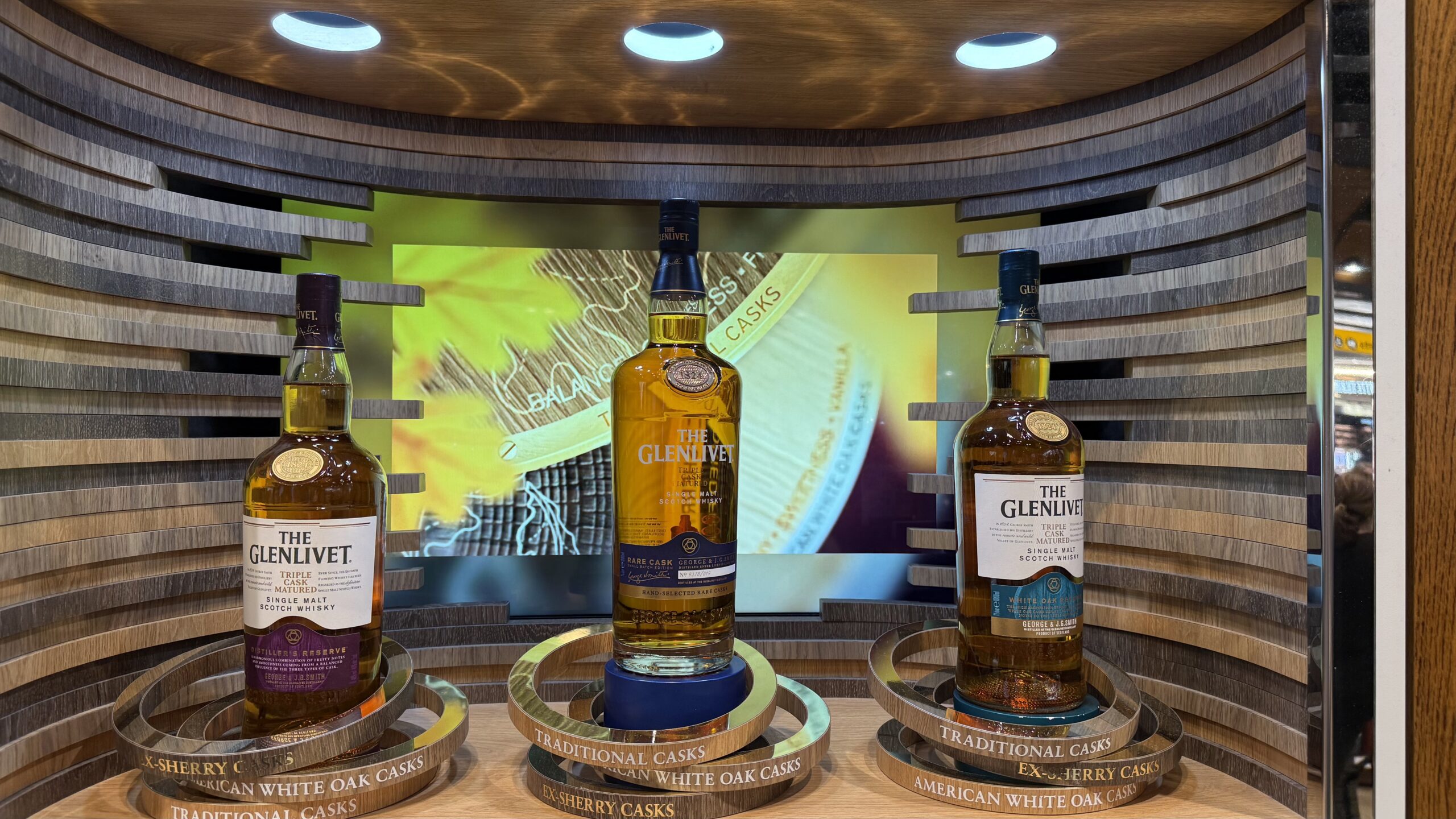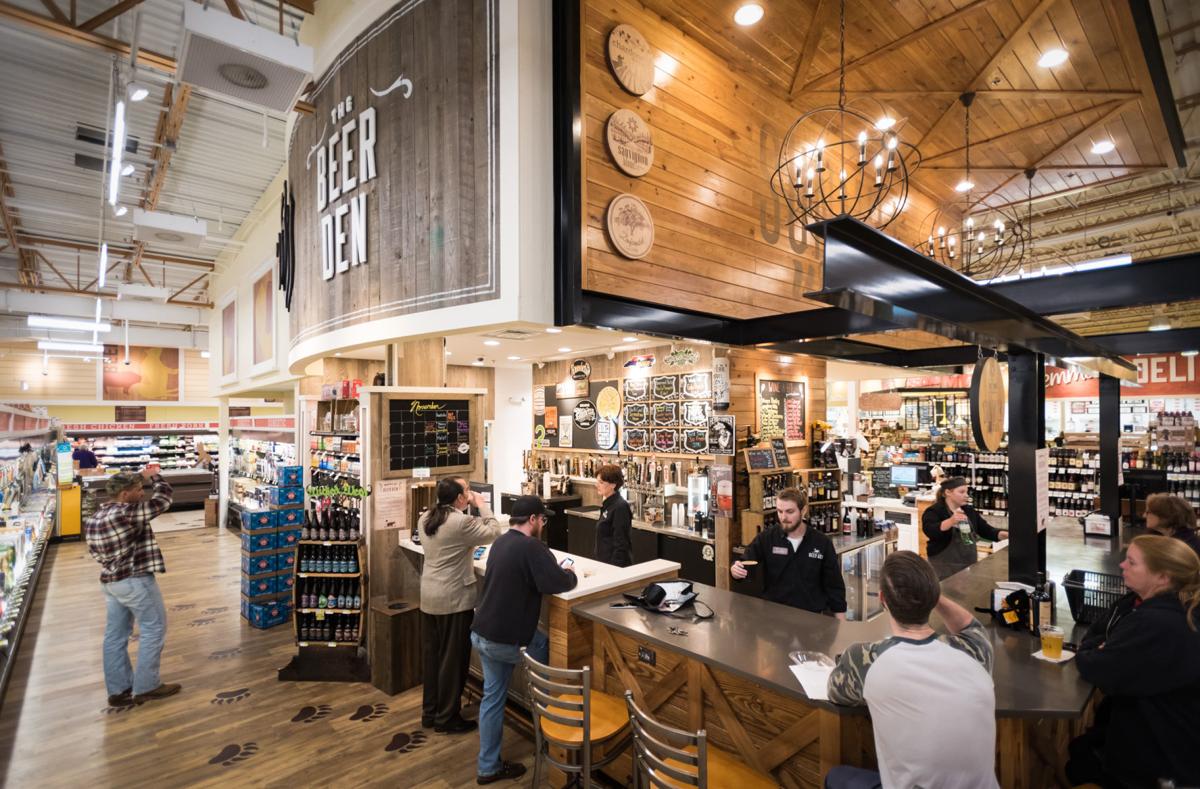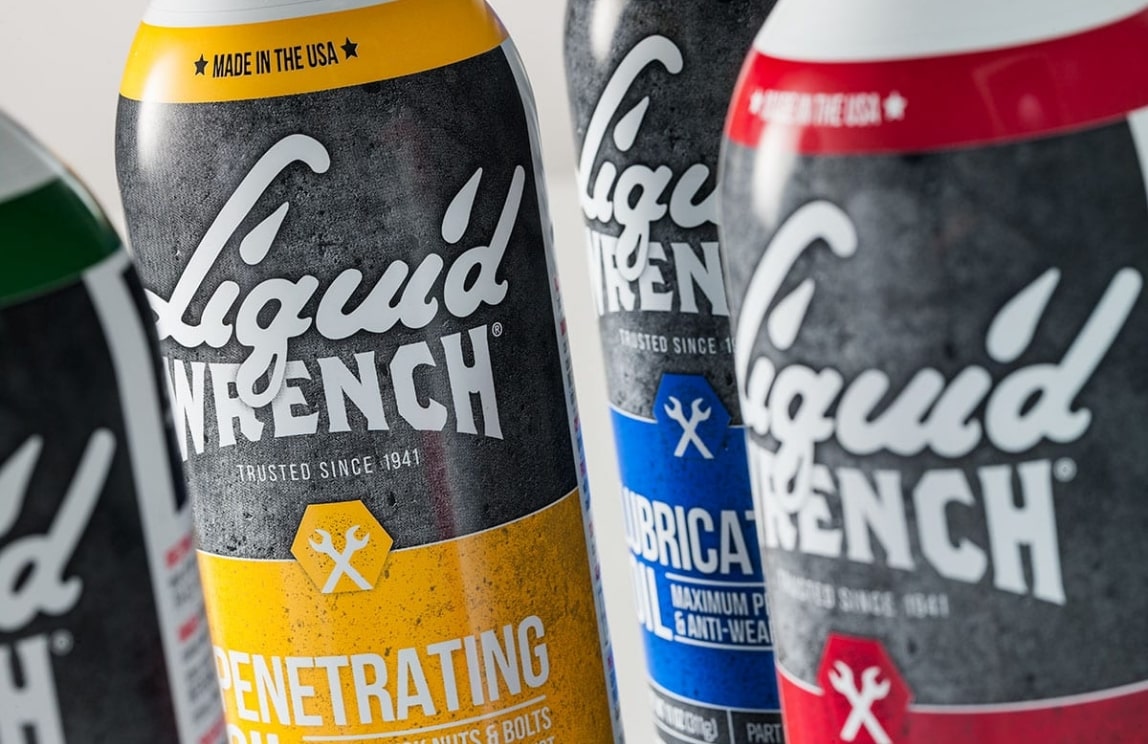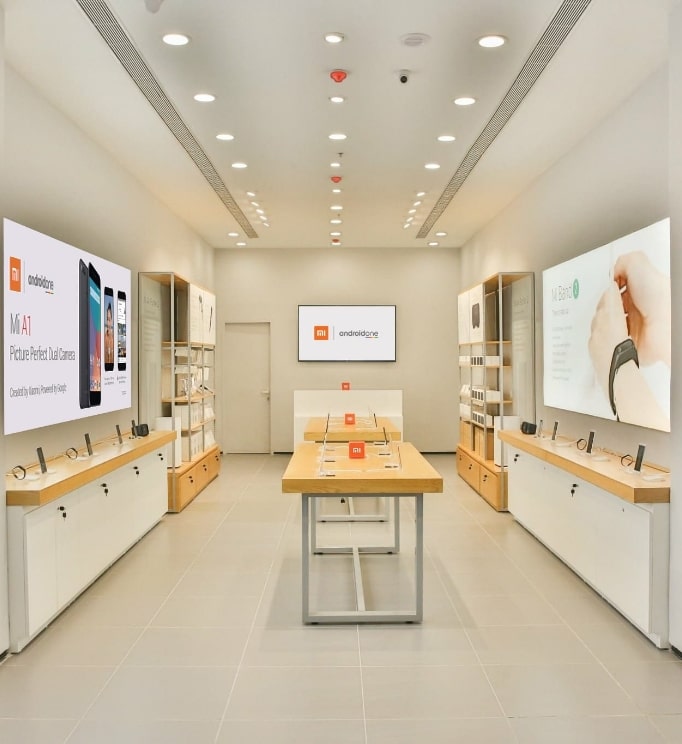Elevate Your Liquor Store with These Creative Display Ideas
Want to boost sales and create a memorable customer experience? Effective liquor store display ideas are key. This list provides seven proven strategies to transform your retail space and attract more customers. Learn how to use thematic displays, premium brand spotlights, interactive tasting stations, cross-merchandising, digital displays, local producer showcases, and modular systems to create a dynamic and profitable environment. These liquor store display ideas will help you increase product visibility and encourage higher purchase values.
1. Thematic Seasonal Displays
One of the most effective liquor store display ideas to boost sales and engage customers is using thematic seasonal displays. This strategy capitalizes on holidays, events, and the changing seasons to create attractive and timely product arrangements. These displays are dynamic, transforming throughout the year to highlight relevant products and generate a sense of urgency and freshness within the store environment. This makes your store a destination for shoppers looking for specific products for celebrations or gatherings, aligning perfectly with consumer purchasing patterns.
Seasonal displays achieve their impact through several key features. Product selections rotate based on seasonal relevance, ensuring that the most appropriate spirits, wines, and beers are prominently featured. Holiday-specific decorations and signage enhance the visual appeal and communicate the theme effectively. Limited-time offerings and special promotions are placed front and center to drive impulse purchases. Finally, color schemes and props that match the seasonal theme create a cohesive and immersive shopping experience. For example, a summer display might feature bright colors and beach-themed props alongside tequila and mixers, while a winter display could utilize cooler colors and cozy textures to promote spiced rum and holiday-themed liqueurs.
The benefits of implementing thematic seasonal displays are numerous. They create a sense of urgency with limited-time offers, encouraging immediate purchases. The constantly evolving displays keep the store looking fresh and updated, drawing customers back repeatedly. They also provide natural marketing opportunities, tying in with current events and consumer interests. Retailers like Total Wine & More, BevMo!, and Spec’s have successfully used this strategy to drive sales and enhance their brand image. Think of Total Wine & More’s elaborate Halloween displays with orange and black themed shelving for seasonal spirits, or BevMo!’s Christmas gift basket and premium spirits displays with festive lighting. Even summer barbecue-themed displays with bourbon, tequila, and mixers at Spec’s demonstrate the versatility of this approach.
However, there are some drawbacks to consider. Seasonal displays require regular maintenance and updates, which can be labor-intensive. Storing off-season decorations necessitates adequate storage space. There are also additional costs associated with purchasing seasonal display materials. Finally, effective seasonal displays require planning well in advance to ensure a smooth and impactful execution.
For brands and retailers looking to implement this liquor store display idea, planning is crucial. Here are a few actionable tips:
- Plan seasonal rotations at least 3-6 months in advance: This allows ample time for ordering materials, designing displays, and coordinating marketing efforts.
- Create a calendar of seasonal display changes: A visual calendar can help track upcoming themes and ensure timely transitions.
- Incorporate both major holidays and local events: This caters to a wider range of customer interests and creates a sense of community.
- Use modular display components that can be reconfigured: This saves money and reduces storage needs.
- Take photos of successful displays for future reference: This creates a valuable resource for future planning and allows for continuous improvement.
Thematic seasonal displays deserve a prominent place in any liquor store’s marketing strategy. By carefully planning and executing these displays, retailers can effectively engage customers, drive sales, and create a memorable shopping experience. This approach is particularly valuable for brand directors, marketing directors, and brand managers looking to elevate their in-store presence and connect with their target audience on a deeper level.
2. Premium Brand Spotlight Areas
Elevating your liquor store’s image and driving high-margin sales can be achieved through dedicated Premium Brand Spotlight Areas. This liquor store display idea involves creating distinct zones within your store specifically designed to showcase high-end and premium liquor brands. These areas utilize sophisticated fixtures, strategic lighting, and impactful presentation techniques to create a “store-within-a-store” experience that draws attention to luxury products. This not only boosts sales but also enhances the overall atmosphere of your establishment, making it a destination for discerning customers.
These spotlight areas are characterized by features such as custom-built shelving and display cases crafted from high-quality materials like glass or wood, replacing standard shelving units. Spot or accent lighting is strategically used to highlight the unique qualities of each bottle, creating an alluring visual display. Brand-specific signage and educational materials provide context and enhance the customer’s understanding of the premium offerings. Furthermore, temperature-controlled displays can be incorporated for specific products requiring precise storage conditions.
The benefits of incorporating Premium Brand Spotlight Areas are numerous. They demonstrably increase sales of high-margin products, contributing significantly to profitability. The curated, luxurious shopping experience they provide attracts a discerning clientele, setting your store apart from competitors with generic displays. Often, these displays can be partially or fully funded through brand marketing dollars from the featured distilleries, reducing the financial burden on the retailer. Furthermore, these dedicated spaces offer a platform to educate customers about the nuances of premium products, fostering brand loyalty and driving future purchases. Examples of successful implementations include Binny’s Beverage Depot’s Whiskey Hotline section with its warm wood paneling and specialty lighting, K&L Wine Merchants’ locked premium spirits cabinets with custom lighting for enhanced security and visual appeal, and the renowned Harrods Wine & Spirits Department’s brand-specific luxury displays.
However, there are also considerations to keep in mind. Premium Brand Spotlight Areas require a significant amount of floor space, which may be a constraint for smaller stores. The investment in custom fixtures and specialized lighting can be substantial. The upscale presentation may inadvertently intimidate budget-conscious shoppers, and increased security measures are necessary to protect the high-value inventory.
To maximize the effectiveness of Premium Brand Spotlight Areas, consider these actionable tips: negotiate with premium brands for display allowances or co-branded fixtures, utilize anti-theft measures such as locked cases for particularly expensive bottles, invest in staff training specifically focused on the premium products featured, position the spotlight area strategically near the center or back of the store to increase exposure to other product categories, and rotate featured brands quarterly to maintain customer interest and showcase a diverse range of premium offerings. This approach, popularized by luxury retailers like Harrods and Selfridges, as well as larger beverage retailers like Binny’s Beverage Depot and Total Wine & More’s Reserve Room concept, is a proven method for elevating your liquor store’s image and driving sales of high-margin products. This particular liquor store display idea deserves its place on this list due to its potential to significantly impact both the customer experience and the bottom line, making it a compelling strategy for retailers seeking to cater to a discerning clientele and enhance their brand image.
3. Interactive Tasting Stations
Interactive tasting stations are a dynamic liquor store display idea that can significantly elevate the customer experience and boost sales. They transform passive browsing into active engagement by allowing customers to sample products before committing to a purchase. These stations often incorporate digital information kiosks, guided tastings led by knowledgeable staff, or self-serve sampling systems, providing a multi-faceted approach to product discovery. This immersive approach educates customers about different flavor profiles, production methods, and ideal pairings, fostering confidence in their purchase decisions and encouraging them to explore new and unfamiliar products.
Successful implementations of interactive tasting stations can be seen in industry leaders like Total Wine & More, known for their “Explorer Stations” featuring rotating weekly tastings. Astor Wines & Spirits offers a guided tasting bar with expert staff who provide personalized recommendations, while Hedonism Wines utilizes tasting machines for a self-guided sampling experience. These examples demonstrate the versatility of tasting stations and how they can be tailored to different store formats and target audiences. For further insights into successful shopper marketing strategies, learn more about Interactive Tasting Stations.
To create a compelling tasting station experience, consider incorporating features like appropriate sampling equipment (compliant with local regulations), digital screens displaying product information, proper glassware for different spirits, spittoons and water stations for palate cleansing, and tasting note cards or digital feedback systems. These elements contribute to a professional and engaging atmosphere.
This liquor store display idea deserves its place on this list because it directly addresses a key challenge in the beverage alcohol industry: overcoming purchase hesitancy with unfamiliar products. By offering a tangible experience, tasting stations mitigate risk for the consumer and encourage trial, leading to increased sales and brand loyalty.
4. Cross-Merchandising Recipe Displays
Cross-merchandising recipe displays are a powerful liquor store display idea that elevates the customer shopping experience while driving sales. This strategy involves grouping complementary products together based on specific recipes or common usage scenarios. Imagine a customer walking into your store wanting to make margaritas. Instead of having to hunt down tequila, lime juice, and orange liqueur separately, they find everything conveniently located in one attractive display, perhaps even with salt and margarita glasses. This not only simplifies the shopping process but also encourages larger purchases and introduces customers to new product combinations.
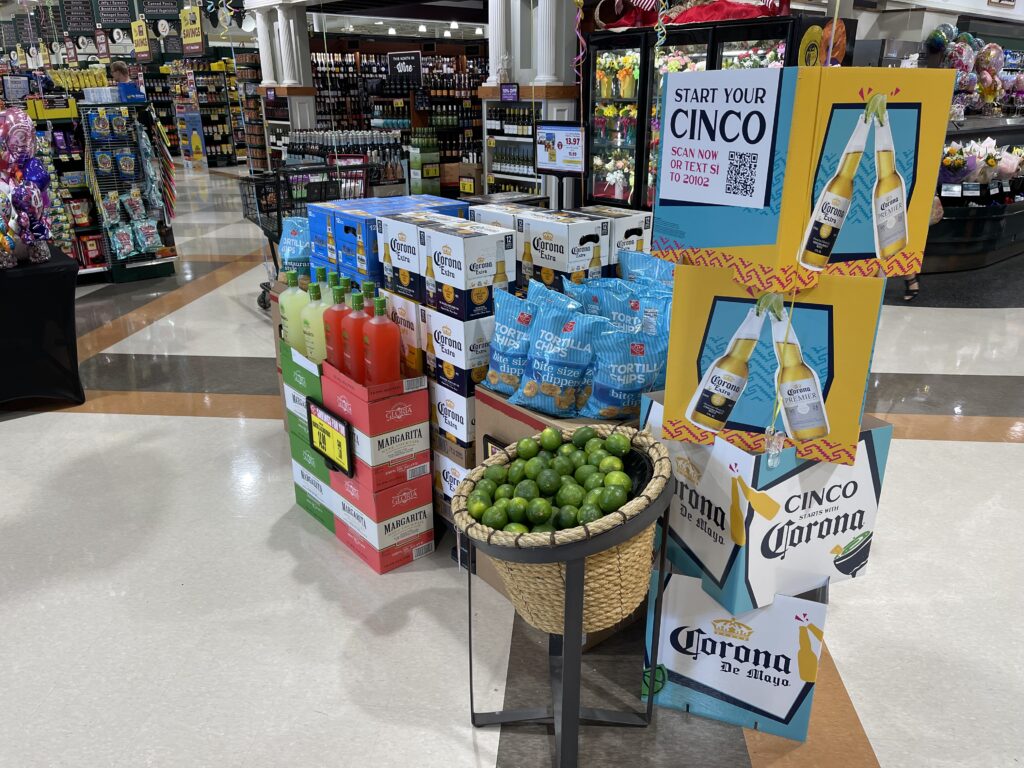
These displays often feature recipe cards, QR codes linking to online recipes, or even bundled products from different categories, all themed around popular cocktails or drinking occasions like “Football Season Cocktails” or summer BBQs. This provides inspiration and solutions for customers, making it easier for them to envision and purchase everything they need. Successful examples include BevMo!’s “Moscow Mule Kit” displays with vodka, ginger beer, lime, and copper mugs, and Binny’s Beverage Depot’s “Margarita Madness” endcap displays. These bundled displays often include promotional pricing, further incentivizing the purchase of the entire set. This tactic is highly effective at moving slower-selling items by pairing them with popular products, creating a win-win for both the customer and the retailer. Learn more about Cross-Merchandising Recipe Displays
This approach is particularly beneficial for increasing average basket size and creating solution-based selling opportunities. By presenting the customer with a complete package, you remove the guesswork and encourage them to purchase more than they initially intended. This strategy also allows for incorporating mixers, garnishes, and spirits in one location, maximizing visibility and driving impulse buys.
However, implementing cross-merchandising recipe displays requires careful planning and execution. It necessitates coordination across product categories, which can disrupt traditional store layouts and require duplicate stocking of some items. Maintaining these displays also requires frequent refreshing to keep them relevant and engaging, reflecting seasonal trends and customer preferences.
Tips for Successful Cross-Merchandising Recipe Displays:
- Trend-Driven Displays: Create displays based on trending cocktails from social media platforms like TikTok and Instagram.
- Maximize Visibility: Utilize endcaps and high-traffic areas for maximum impact.
- Showcase the Finished Product: Include a completed display example (e.g., a prepared Moscow Mule) to inspire customers.
- Offer Bundle Discounts: Provide a slight discount on the bundled purchase to encourage higher transaction values.
- Seasonal Updates: Adapt displays to seasonal drinking patterns, such as featuring warm cocktails in the winter and refreshing drinks in the summer.
- Partner for Success: Explore co-marketing opportunities with non-alcoholic brands for mixers and garnishes.
Cross-merchandising recipe displays deserve a prominent place in any liquor store’s marketing strategy due to their ability to significantly boost sales, simplify the customer journey, and offer a valuable service by providing inspiration and convenient solutions. Companies like Total Wine & More and Trader Joe’s, along with the shopper marketing teams at Diageo, have demonstrated the effectiveness of this approach. By staying attuned to customer preferences and adapting displays accordingly, liquor stores can leverage this powerful strategy to drive significant growth.
5. Digital Interactive Displays
In today’s tech-driven world, integrating digital elements into your liquor store display ideas is no longer a futuristic concept, but a valuable tool for engaging customers and driving sales. Digital interactive displays offer a modern and engaging way to provide product information, promotions, and personalized recommendations, enhancing the overall shopping experience. These technology-enhanced systems, encompassing touchscreens, digital signage, QR codes, and mobile app integration, transform the traditional liquor store environment and provide valuable data-driven insights into customer preferences. This makes them a powerful addition to any liquor store looking to modernize and optimize their displays.
How They Work:
Digital interactive displays empower customers to actively engage with product information beyond static labels. Touchscreen kiosks allow shoppers to search for specific products, learn about different brands and varietals, and access tasting notes. Digital shelf tags offer dynamic pricing and promotions, ensuring real-time updates and attracting attention to special offers. QR codes printed on shelf talkers or bottles can link customers to videos showcasing the production process, cocktail recipes, expert reviews, or even augmented reality experiences. Mobile app integration can further personalize the experience, offering tailored recommendations based on past purchases or browsing history. Digital signage displays rotating content such as promotional videos, seasonal cocktails, or brand stories, creating a vibrant and informative atmosphere.
Examples of Successful Implementation:
- Bottlerocket Wine & Spirit: Their interactive recommendation kiosks guide customers through a series of questions about their taste preferences to suggest suitable wines and spirits, making the selection process more engaging and less daunting.
- Gary’s Wine & Marketplace: This retailer utilizes a digital shelf tag system to display real-time pricing and promotions, ensuring accuracy and enabling quick updates to respond to market changes.
- Pernod Ricard’s ‘Connected Bottles’ Technology: This innovative approach uses NFC tags embedded in bottle labels, allowing customers to tap their smartphones and access information about the product’s origin, production methods, and cocktail recipes.
Actionable Tips for Implementation:
- Start Small and Scale: Begin with one digital element, such as digital shelf tags or a single touchscreen kiosk, before expanding to a full-fledged system. This allows for a gradual learning curve and minimizes initial investment.
- Robust WiFi Infrastructure: Ensure your store’s wifi network can handle the demands of multiple digital displays and customer interactions without lagging or connectivity issues.
- Thorough Staff Training: Equip your staff with the knowledge and skills to troubleshoot technical issues and guide customers on using the digital interfaces effectively.
- Traditional Signage Backup: Maintain traditional signage as a backup in case of technical malfunctions, ensuring customers can still access essential product information.
- Regular Content Updates: Keep digital content fresh and engaging by updating it at least monthly. Promote seasonal items, highlight new arrivals, and feature engaging content to maintain customer interest.
- Enhance, Don’t Complicate: Digital elements should simplify and enhance the shopping experience, not create confusion or overwhelm customers. Prioritize user-friendly interfaces and intuitive navigation.
6. Local and Craft Producer Showcases
One of the most effective liquor store display ideas for differentiating your business and tapping into a growing consumer trend is creating Local and Craft Producer Showcases. These dedicated display areas highlight local distilleries, craft producers, and regional specialties, often incorporating storytelling elements that resonate with today’s consumer. This approach not only offers unique products but also fosters a sense of community and supports local businesses, making it a valuable addition to any liquor store looking to stand out.
What it is and how it works: A Local and Craft Producer Showcase is more than just shelving local spirits; it’s about creating an experience. These displays often feature information about the producers, their methods, and the origin of their ingredients. Think of it as a mini-museum celebrating local craftsmanship. This approach capitalizes on the growing consumer interest in artisanal, local, and authentic products with unique stories.
Examples of Successful Implementation:
- Twin Liquors (Texas): Their “Made in Texas” section showcases the breadth and depth of Texan craft spirits, offering a one-stop shop for customers seeking local flavors.
- Astor Wines & Spirits (New York): Their New York State producer showcase provides a platform for local distilleries to gain visibility in a competitive market.
- K&L Wine Merchants (California): Their California craft distillery display highlights the state’s booming craft spirits scene, featuring a curated selection of unique and hard-to-find products.
Actionable Tips for Implementation:
- Host meet-the-maker events: These events offer a valuable opportunity for customers to connect with the people behind the products, fostering loyalty and driving sales.
- Create rotating featured producer displays: Keep the showcase fresh and exciting by regularly highlighting different local distilleries.
- Develop relationships directly with local distilleries: This allows for collaborative marketing efforts and ensures a steady supply of unique products.
- Use storytelling prominently in signage: Share the stories of the producers, their unique methods, and the origins of their ingredients. For example, highlighting the use of locally sourced grains or unique distillation techniques.
- Create tasting flight options of local products: Encourage exploration and discovery by offering curated tasting flights.
- Emphasize unique production methods or ingredients: Highlight what sets these local products apart, whether it’s organic farming practices, heirloom grains, or innovative distillation techniques.
Why This Deserves a Place on the List: In a market increasingly dominated by large brands, Local and Craft Producer Showcases offer a powerful way for liquor stores to connect with their community, support local businesses, and offer unique products that resonate with today’s discerning consumer. It’s a strategy that builds brand loyalty, differentiates your store, and ultimately drives profitability. This makes it a crucial liquor store display idea for any retailer looking to thrive in the modern marketplace

